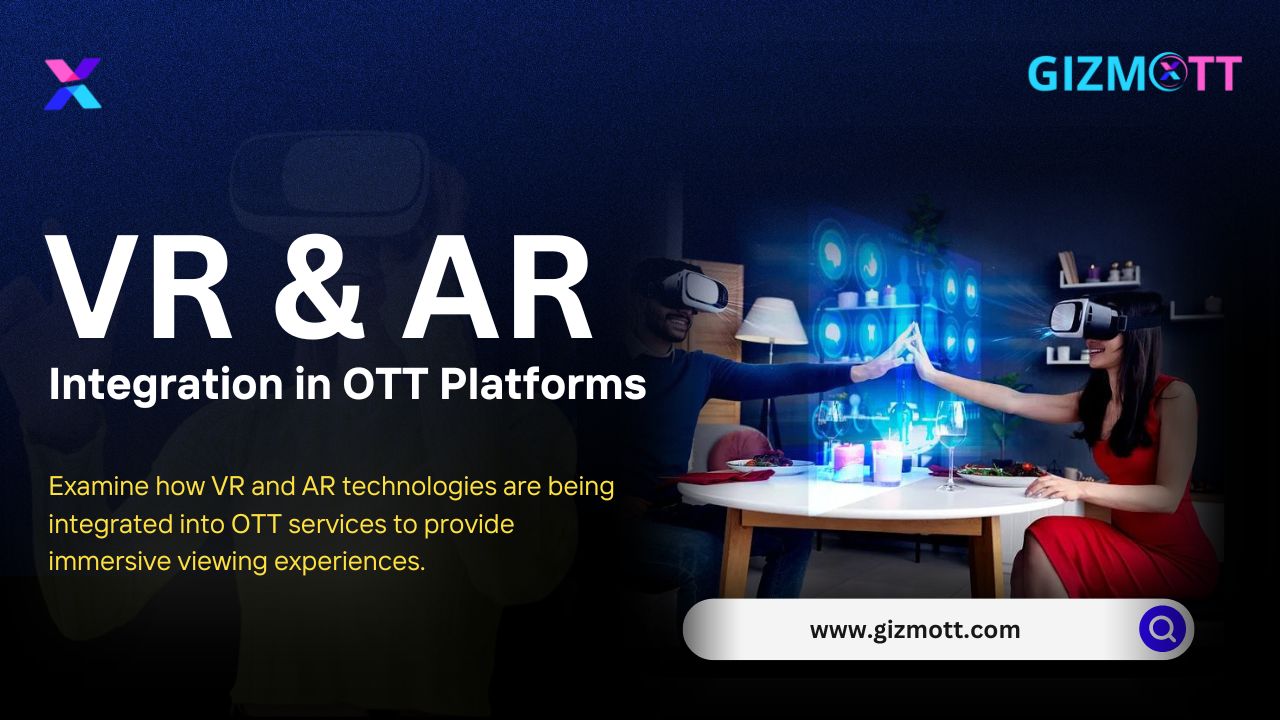The world of Over-the-Top (OTT) streaming platforms has experienced exponential growth over the past decade. From Netflix and Hulu to Amazon Prime and Disney+, these platforms have revolutionized the way we consume content. As technology continues to advance, the integration of Virtual Reality (VR) and Augmented Reality (AR) into OTT platforms is poised to be the next big leap, transforming our viewing experience in unprecedented ways.
The Current State of OTT Platforms
Before diving into the potential of VR and AR, it’s important to understand where OTT platforms currently stand. These services have become household staples, offering vast libraries of movies, TV shows, documentaries, and original content. The convenience of on-demand viewing, coupled with high-quality streaming and personalized recommendations, has made OTT platforms immensely popular worldwide.
Enter VR and AR: A New Dimension of Entertainment
Virtual Reality (VR) immerses users in a fully digital environment, offering a 360-degree viewing experience that can make users feel as if they are part of the scene. Augmented Reality (AR), on the other hand, overlays digital information onto the real world, enhancing the user’s perception of their surroundings.
Enhancing the Viewing Experience
- Immersive Storytelling: VR has the potential to revolutionize storytelling by creating a more immersive experience. Imagine watching a movie where you can look around and explore the environment, interact with characters, and influence the storyline based on your choices. This level of immersion can bring a new depth to narratives, making viewers feel like active participants rather than passive observers.
- Interactive Content: AR can transform how we interact with content on OTT platforms. For example, during a cooking show, AR can project 3D models of ingredients and cooking steps onto your kitchen counter, allowing you to cook along with the chef in real-time. This interactive layer can make educational content more engaging and practical.
- Enhanced Sports Viewing: Sports fans can benefit immensely from VR and AR. VR can place viewers in a virtual stadium, offering different vantage points and a 360-degree view of the action. AR can provide real-time statistics, player information, and interactive replays on the screen, enhancing the viewing experience without interrupting the live action.
- Virtual Concerts and Events: The pandemic has accelerated the trend of virtual events. VR can take this to the next level by offering virtual seats to concerts, theater performances, and other live events. Viewers can enjoy the event from the comfort of their homes while feeling like they are part of the audience.
Challenges and Considerations
While the potential of VR and AR in OTT platforms is immense, there are several challenges to consider:
- Technical Requirements: High-quality VR and AR experiences require powerful hardware and stable, high-speed internet connections. As of now, not all consumers have access to the necessary equipment, such as VR headsets and AR-enabled devices.
- Content Creation: Producing VR and AR content is more complex and expensive than traditional video. Content creators need to adopt new techniques and tools to develop engaging VR and AR experiences.
- User Comfort: Extended use of VR headsets can lead to discomfort or motion sickness for some users. Ensuring a comfortable and enjoyable experience is crucial for the widespread adoption of VR.
- Market Penetration: While VR and AR technologies are advancing rapidly, their market penetration is still in the early stages. OTT platforms will need to balance investment in these technologies with their current offerings to ensure they cater to a broad audience.
Looking Ahead
Despite these challenges, the future of VR and AR in OTT platforms looks promising. As technology becomes more accessible and content creators experiment with new formats, we can expect to see more innovative and immersive experiences. Key developments to watch for include:
- Affordable VR Headsets: As VR hardware becomes more affordable and user-friendly, more consumers will be able to access VR content.
- AR Integration with Wearables: The rise of AR-enabled wearables, such as smart glasses, can make AR content more accessible and practical for everyday use.
- Advancements in 5G: The rollout of 5G networks will provide the high-speed, low-latency connections needed for seamless VR and AR streaming.
- Collaborations and Partnerships: OTT platforms may collaborate with tech companies and content creators to produce exclusive VR and AR content, attracting tech-savvy viewers and early adopters.
Conclusion
As Gizmott and other OTT platforms explore the possibilities of VR and AR integration, the landscape of digital entertainment is set to undergo a profound transformation. By harnessing these immersive technologies, Gizmott not only enhances the viewing experience but also sets a precedent for the industry’s future direction. As users increasingly seek more interactive and personalized content experiences, Gizmott’s bold steps towards integrating VR and AR promise to reshape how we engage with entertainment in the years to come.



